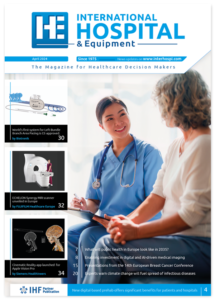Heart rate variability may predict risk of disease in premature infants
Measuring variability of heart rate may identify premature infants at risk of developing narcotising enterocolitis, a serious inflammatory condition that can lead to death, according to Penn State College of Medicine researchers.
Narcotising enterocolitis, or NEC, may lead to destruction of the intestinal wall and vital organ failure. It affects 6 to 10 percent of premature infants within the first two weeks of life.
‘NEC is currently diagnosed by a combination of laboratory and radiology tests, usually done when the disease is already significant,’ said Kim Doheny, director of clinical research in newborn medicine and assistant professor of pediatrics. ‘Since NEC progresses so rapidly and the symptoms develop suddenly, a non-invasive biomarker that allows early detection of patients at risk is required as a matter of urgency.’
Heart rate fluctuates in the intervals between beats, and contributors to this fluctuation are measured through mathematical analysis. One of these contributors is the parasympathetic nervous system — the system that controls digestive responses and regulates the organs during rest — represented through measurement of high-frequency energy distribution. The researchers studied 70 infants born at 28 to 35 weeks within the first five to eight days of life. The babies were stable with no sign of illness.
The researchers then measured heart rate variability in the infants to test whether measuring the high-frequency component of heart rate variability may be used as a way to predict an infant’s NEC risk before disease onset.
Of the 70 infants studied, nine who later developed NEC had decreased high frequency in the heart rate variability, suggesting reduced parasympathetic nervous system activity. Of all the infants with a decreased high-frequency heart rate variability, 50 percent developed the disease. In contrast, 98 percent of those with a higher high-frequency value did not get the disease.
‘This shows that measuring high-frequency variability during this early critical window of postnatal development has value for identifying NEC risk at a time when symptoms are not evident and interventions to improve the parasympathetic nervous system activity can be given,’ said researcher R. Alberto Travagli, professor of neural and behavioral sciences. ‘This relatively simple, economical, and non-invasive method offers the opportunity to monitor at-risk infants more closely and to test the efficacy of emerging treatments.’
The researchers say future investigations should include a larger sample that also includes measurement of inflammation at the time heart rate variability is measured. Penn State College of Medicine

